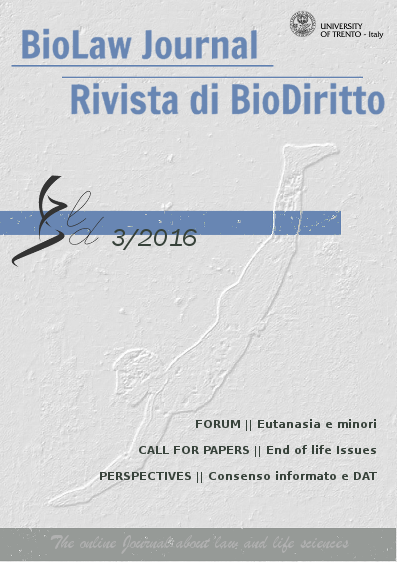Relazione di cura ed Autonomia relazionale. Come rispondere al dolore totale e alla sofferenza: il modello proposto dalle Cure Palliative
DOI:
https://doi.org/10.15168/2284-4503-191Parole chiave:
Palliative care, hospice, end of life, disproportionate treatment, therapeutic abstentionAbstract
The principal goal of a Hospice and palliative care is not to cure but to care. The main focus is to improve the quality of life of terminally ill patients by directly treating pain and addressing physical, psychosocial and spiritual problems of patients and families. The philosophy of Hospice care is based on the respect of patient’s au-tonomy, and the holistic vision of patient and family as a single unit of care. In fact, the principal goal of palliative care is to prevent and relieve patients’ and caregivers’ suffering, by addressing and treating not only physical symptoms as pain but also psychosocial, and spiritual needs. The Palliative care approach defined by WHO, pro-vides relief from pain and other distressing symptoms; affirms life and regards dying as a normal process; integrates the psychological and spiritual aspects of patient care; offers a support system to help patients live as actively as possible until death; offers a support system to help the family cope during the patients illness and in their own bereavement; uses a team approach to address the needs of patients and their families, including bereavement counselling. It aims to improve quality of life in all life-limiting illness, not just cancer. Is an approach delivered by health care providers and can be deployed by any member of the health care team with appropriate support from Hospice/palliative care specialists as required. The role of physicians in addressing patients who need end-of-life treatment in Hospices is crucial to preserve quality of life of both patients and their families. In order to fully meet patients’ and families’ needs, Hospice care can be provided in any setting, including acute and chronic care facilities, patients’ homes, nursing homes and hospitals. The face of dying is changing and we need to adapt our processes of care to respond to this change.##submission.downloads##
Pubblicato
2016-10-31
Come citare
1.
Turriziani A. Relazione di cura ed Autonomia relazionale. Come rispondere al dolore totale e alla sofferenza: il modello proposto dalle Cure Palliative. BioLaw [Internet]. 31 ottobre 2016 [citato 13 dicembre 2025];(3):229-3. Disponibile su: https://teseo.unitn.it/biolaw/article/view/1215
Fascicolo
Sezione
Call for papers





